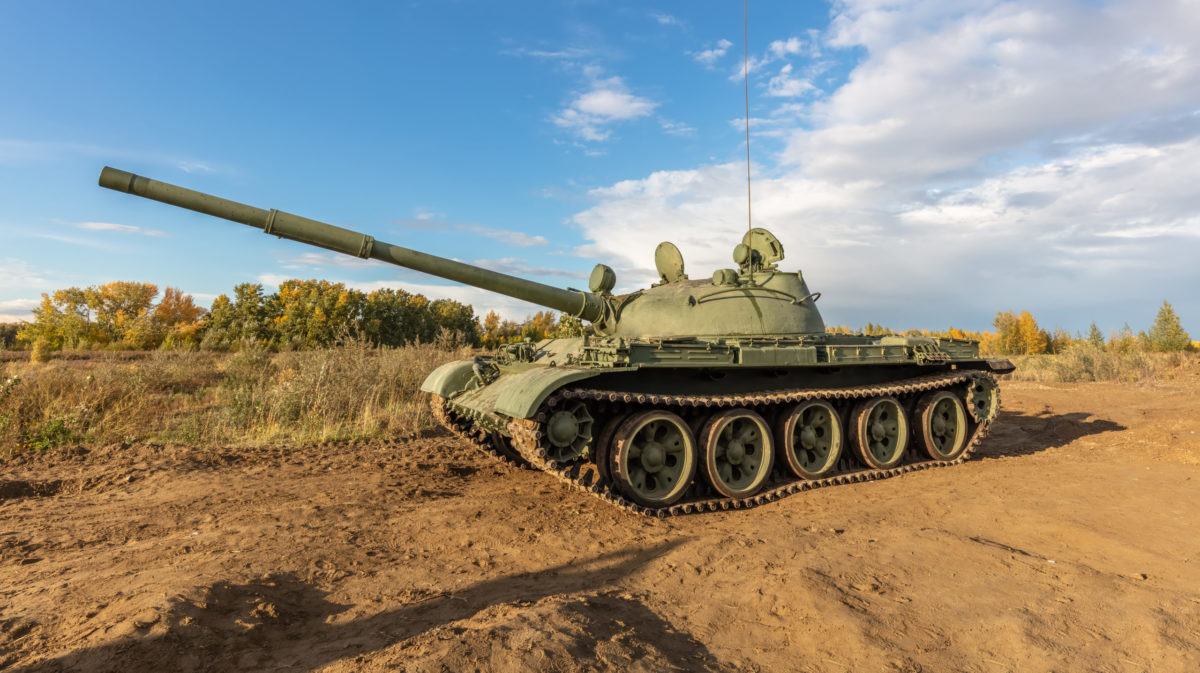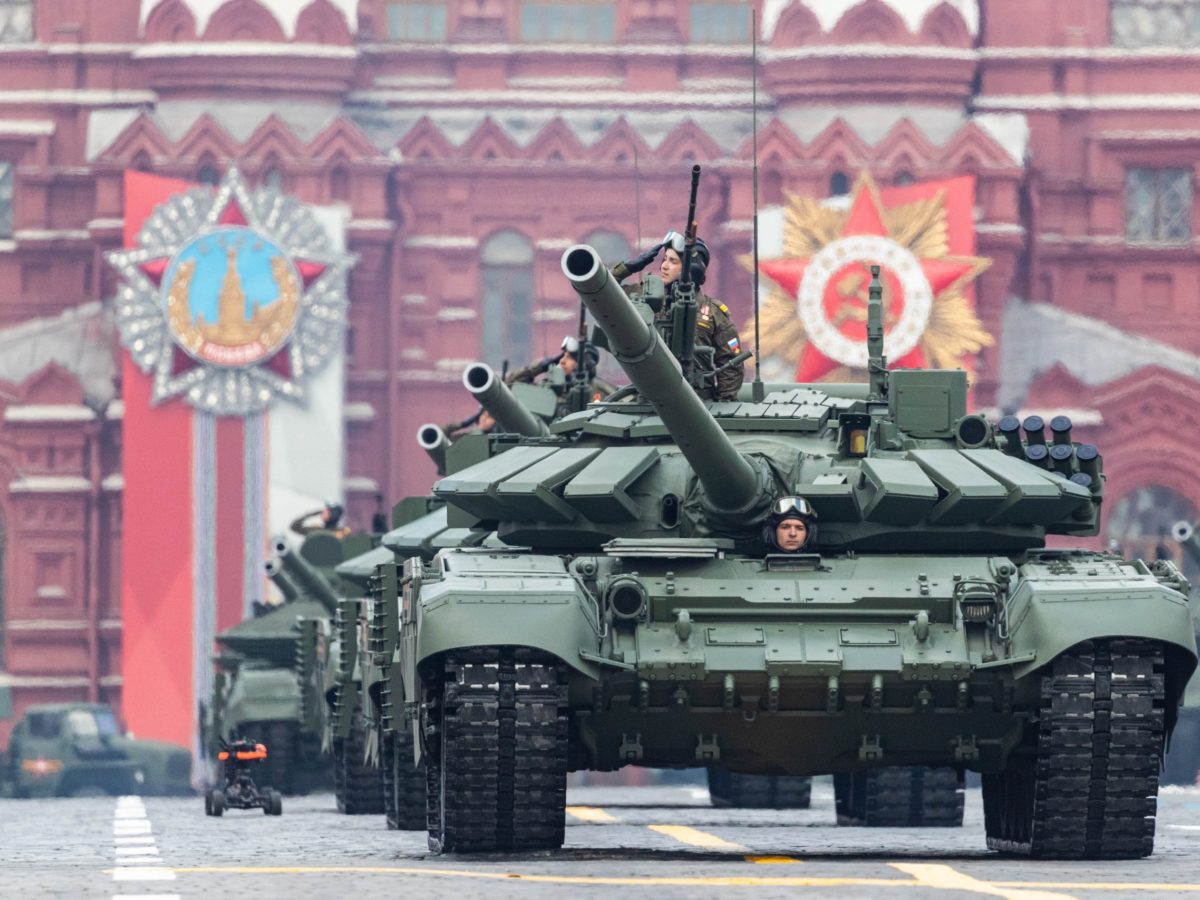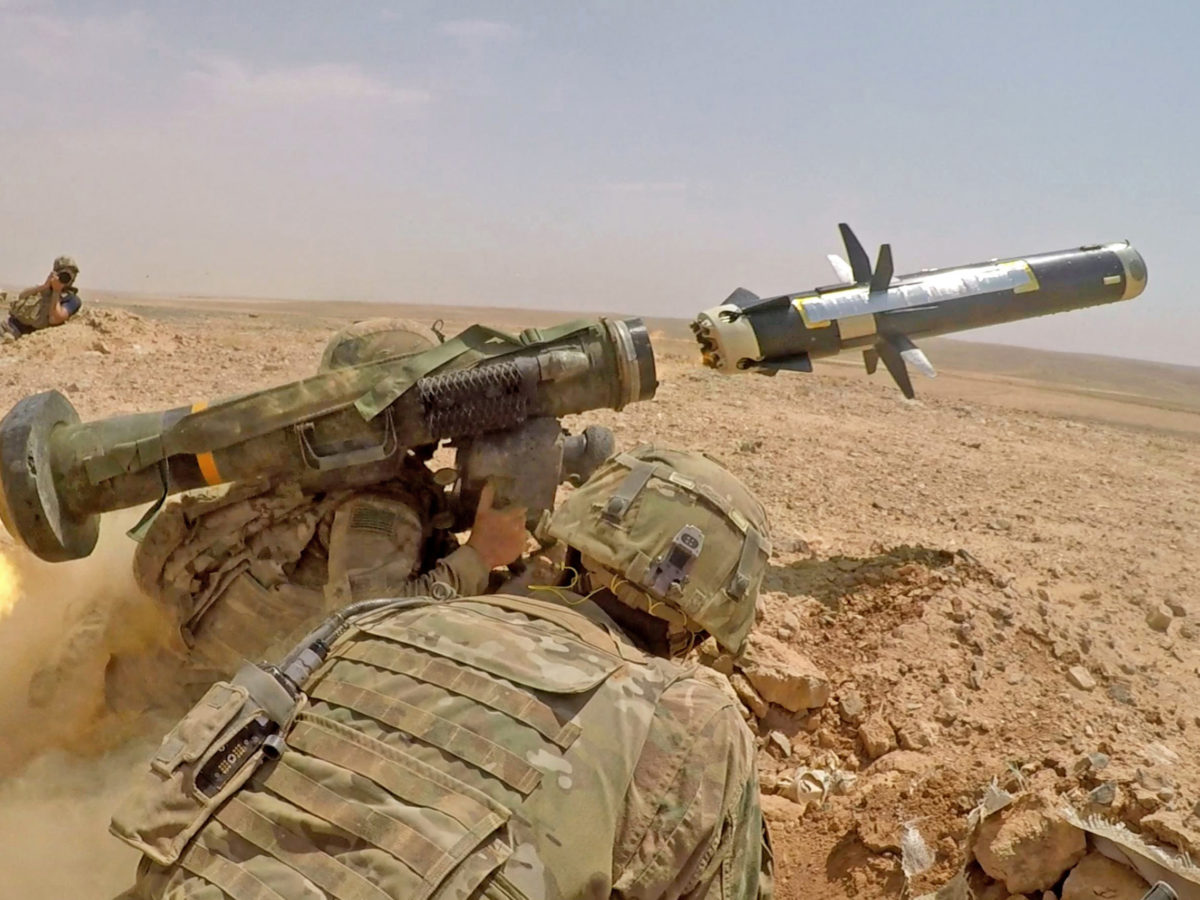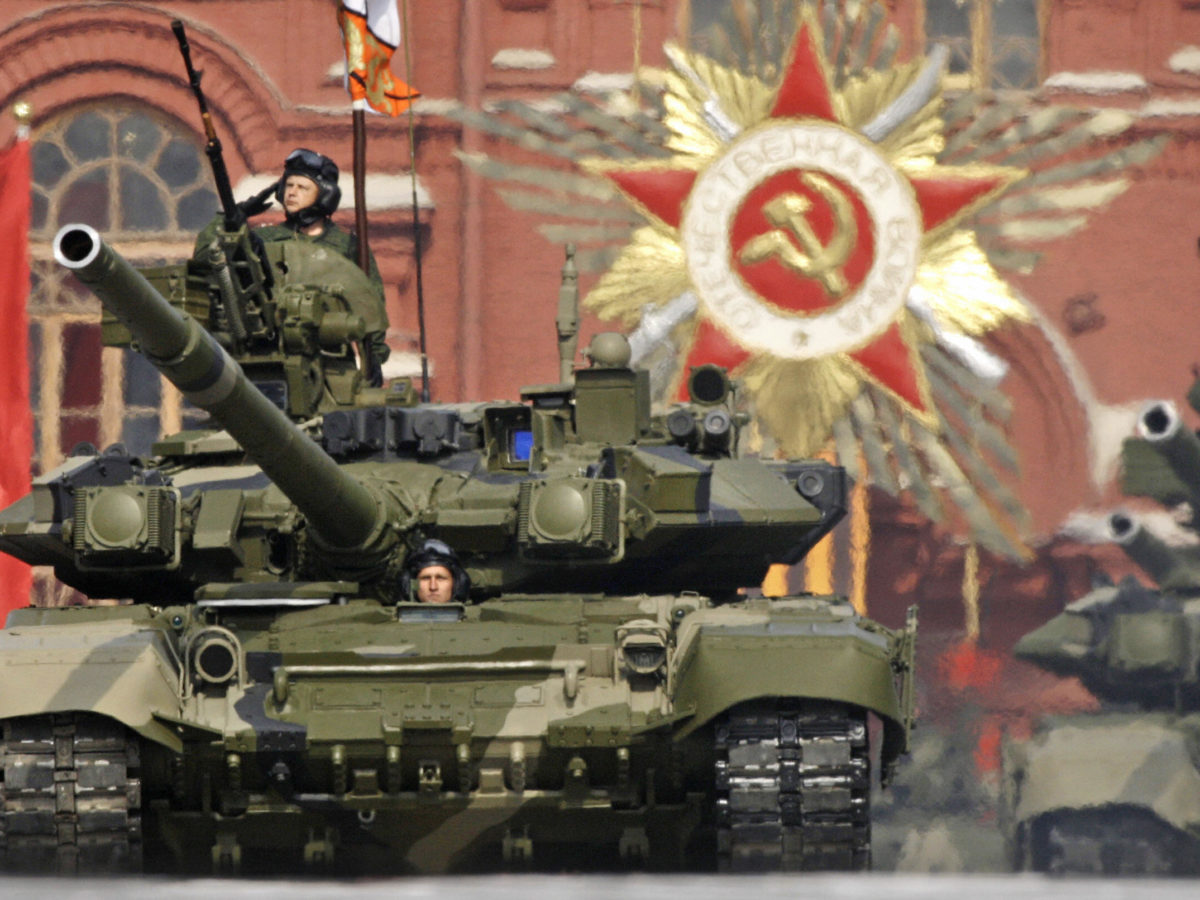As Russian President Vladimir Putin’s “special military operation” to “liberate” Ukraine passed its third month, reports arose in late May 2022 of trains transporting new tanks to Melitopol. On June 5, more turned up at Mykolaiv and Kryvyi Rih. On June 5, more turned up at Mykolaiv and Kryvyi Rih.
Actually, while these tanks may not have been seen in Ukraine before, they were anything but new: They were M-62Ms and T-62MVs, hastily upgraded vehicles dating to the 1960s.
GET HISTORY’S GREATEST TALES—RIGHT IN YOUR INBOX
Subscribe to our HistoryNet Now! newsletter for the best of the past, delivered every Monday and Thursday.
COLD WAR TANK
Designed by Aleksandr Morozov and undergoing first tests in 1959, the T-62 was the survivor of a number of competing designs for a more powerful successor to the T-54 and T-55 main battle tanks. It was longer and wider, was protected by up to 100 mm of armor. Its V-55 12-cylinder four-stroke diesel engine was the same as that of the T-55, producing 581 horsepower, to propel its five pairs of aluminum, rubber-tired road wheels on a torsion-bar suspension. Maximum road speed was 31 mph (25 mph cross-country), and range on the road was 280 miles.
The principal advance in the T-62 was its main weapon, the first smoothbore cannon mounted on a production tank. Recognizable by the bore evacuator midway down the run instead of up front, the 115 mm U-5TS “Molot” replaced a rifled shell with a fin-stabilized high explosive armor piercing round, which while not as accurate, offered a 10% to 20% greater muzzle velocity. Its effective range was 4 kilometers (2.5 miles) by day and 800 meters (2,600 feet) using night vision equipment. Operated by a four-man crew, the T-62 supplemented its main gun with the usual 7.62 mm PKT coaxial machine gun and a 12.7 mm DShK machine gun flexibly mounted on the cast turret.
DUBIOUS MAINSTAY
Entering production in July 1961, the T-62 proved a dubious mainstay for the Soviet army by the time the last of some 20,000 came off the assembly line of the Ural Vagon Zavod in 1975. At 42 tons, the T-62 was heavier and less maneuverable than the T-54 series it was meant to replace. It was also at the zenith of development for the Christie suspension, eschewing the use of return rollers, used so successfully on the T-34, as the T-62’s longer track length had a chronic habit of throwing treads off in a tight turn.
Although examples were sold to numerous countries and participated in equally numerous wars — including the Middle East conflicts and the Soviet-Russian campaigns in Chechnya, Afghanistan and South Ossetia — only one nation outside of the Soviet Union built the T-62 under license because its performance did not surpass the T-55’s quite enough to justify its being twice as expensive to produce (The sole exception was North Korea in the 1980s).
Recommended for you
No Scrapyard Yet
As has been the case with so many of its contemporaries, the T-62 was not scrapped en masse after a new generation, led by the T-64 and T-72, took its place in the first line of Soviet armor. The reason for such frugality has come to light as the Russian army advance into Ukraine has turned into a slow-moving slaughterhouse.
Upgraded and assigned to reserve battalion groups, they are apparently being placed in a secondary role, helping to consolidate the gains of the main Russian assaults or being assigned to crews of pro-Russian eastern Ukrainians. More recently, in June 2022, T-62s have turned up in the markings of South Ossetian Battalion “Alana,” fighting alongside the “Republican Ukrainian” units in the Donbass region.
Among the upgrades to the T-62s television imaging and a night sights capable sighting targets at up to 2,000 meters. Besides segments of active armor on the hull and turret, the tank has been fitted with the sort of grid armor added to the T-72s, T-80s and T-90s, intended to prematurely explode rocket propelled grenades or antitank missiles. Given such nicknames as “chicken coops” and Ilych’s eyebrows” by the Ukrainians (with possible agreement from some of the Russian crews), the grids cause more trouble than their protective properties are worth, such as enlarging the tank’s radar silhouette, interfering with the movement of the turret machine gun or shorting out the radio aerials, leading many crewmen to discard that supplementary armor. As a further commentary on the T-62’s effectiveness, some have been seen being buried to serve as local pillboxes.
One final ironic note on the T-62 — for now — is that large numbers of the tank were produced in the then-Ukrainian Soviet Socialist Republic at the Kharkiv Morozov Machine Building Design Bureau. Refurbishing their supplies, the Ukrainians have given what they designate the T-62AG a 125 mm KBA-101 cannon and a 5TDF 700-hp diesel engine. Instead of sending this ostensibly improved model to the front, however, they have been offering it on the open market, evidently preferring to raise the money to purchase something better.
historynet magazines
Our 9 best-selling history titles feature in-depth storytelling and iconic imagery to engage and inform on the people, the wars, and the events that shaped America and the world.









